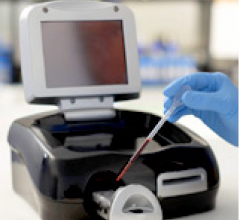January 27, 2010 — Today, the Society for Cardiovascular Angiography and Interventions (SCAI) launched "WINHeart — Score a WIN for Women," an initiative that raises awareness surrounding gender-based disparities in the diagnosis, treatment and survival of women with cardiovascular disease (CVD).
February 3, 2010 – The new Gator ClipSeal Plug is designed to maintain a hemostatic seal around 0.035- or 0.038-inch guide wires within large hemostatic valve introducer sheaths to minimize blood loss.
February 3, 2010 – The FDA granted 510(k) market clearance for Shina Systems’ 3Di advanced medical (3D/4D) visualization software that downloads over the Internet and provides a full suite of image processing and clinical analysis applications on any PC.
Providing exceptional cardiovascular care for patients to achieve the best possible outcomes is the number one goal for ...
February 3, 2010 – Results of a four-year study evaluating the safety and efficacy of laser assisted lead removal using the Spectranetics laser sheath (SLS II), found a 97.7 percent clinical success rate.
February 2, 2010 - A second-generation transradial compression bracelet, the Zoom 2010, is being released by Zoom Co Medic. This bracelet is designed to obtain a stable compression of the radial artery, which will allow an uninterrupted flow of blood sufficient to protect the vascular system, while assuring adequate compression to avoid hematoma and encouraging prompt hemostasis.
February 2, 2010 - Among noninvasive imaging tests for ruling out coronary artery disease (CAD), computed tomography (CT) is a more accurate noninvasive test than magnetic resonance imaging (MRI), according to a comparative study released in Annals of Internal Medicine.
Cardiac positron emission tomography (PET) is growing in popularity among cardiologists because it provides the ability ...
Engineered specifically for the carotid artery, Abbott's self-expanding Xact Stent uses a closed-cell, tight-mesh design allows for a high coverage area and better conformity to the carotid artery, reducing the release of plaque as well as the potential for snagging upon removal.
The ACCULINK carotid stent is designed to provide easy and accurate stent placement in patients who have carotid atherosclerosis and who are at high risk for conventional surgery. The ACCULINK uses rapid exchange technology, enabling a single operator to easily control the embolic protection device and stent delivery system during catheter manipulations. The stent features an open-cell design.
The ACCUNET embolic protection system is designed to provide excellent capture capabilities and easy filter control when doctors perform carotid stenting interventions.
When performing radiofrequency (RF) ablation to treat cardiac arrhythmia, medical professionals must balance the safety ...

February 2, 2010 – Based on its recent research on the wearable energy harvesters market, Frost & Sullivan presented the Holst Centre and imec with the 2009 European Frost & Sullivan Award for Technology Innovation for its wearable electrocardiograph (ECG) energy harvesting solution. The system is powered by heat naturally dissipated from the human body.
February 2, 2010 – Data published in EuroIntervention (EuroIntervention, 2010; 5:698-702) demonstrate good safety and efficacy, low target vessel revascularization (TVR) and no late stent thrombosis at one year in patients with ST-elevation myocardial infarction (STEMI) who underwent primary percutaneous coronary intervention (PCI) and implantation of the Genous Bio-Engineered R Stent.
February 2, 2010 - Two protocols for reduced-dose cardiac imaging, without compromising image quality, may help enhance the performance of gamma cameras by shortening acquisition times, enabling reduced radiopharmaceutical doses and increasing image resolution.
Change Healthcare Cardiology Hemodynamics is an integrated hemodynamic monitoring system for monitoring vital signs and ...
February 1, 2010 – The FDA granted market clearance for the PICC WAND introducer catheter, which enables clinicians to insert a peelable sheath for PICC or midline catheter placement using the new Accelerated Seldinger Technique (AST), for faster vascular access.
February 1, 2010 – The design have been completed and a patent application filed for a troponin-I self-metering cartridge for the QL Care Analyzer point-of-care (POC) diagnostic device. The system does not require a lab technician. Troponin-I is used to diagnose the presence and severity of a heart attack.
February 1, 2010 – Three patent disputes between Boston Scientific Corp. and Johnson & Johnson (J&J) were settled today with Boston paying $1.7 billion. The disputes date back to 2003 and cover Boston Scientific’s Jang patent and J&J’s Palmaz and Gray patents, all of which involve intellectual property in the cardiovascular arena.


 February 03, 2010
February 03, 2010















